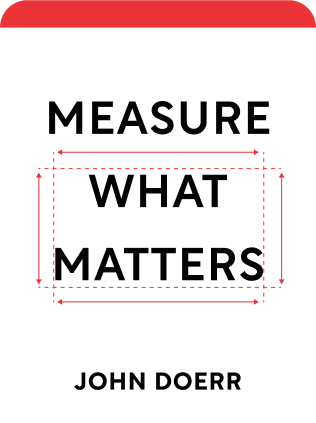

This article is an excerpt from the Shortform summary of "Measure What Matters" by John Doerr. Shortform has the world's best summaries of books you should be reading.
Like this article? Sign up for a free trial here .
What are OKRs in business, and how do they work? How can OKRs help you better your business and increase profits?
OKRs in business are the best way to create and maintain business goals. OKRs are specific, measurable, and results oriented. They’re commonly used by successful businesses like Google.
Keep reading to find out the answer to the question “what are OKRs in business” and learn how you can use OKRs.
Background on OKRs
In 1999, Google was a small startup with an ambitious goal: to make the internet relevant and accessible to everyone. Unfortunately, founders Larry Page and Sergey Brin had zero experience managing a company, and there were already 17 other search engines competing for market dominance. Page and Brin had to figure out how to break down their broad, ambitious mission into manageable, measurable pieces, and they had to do it quickly. Luckily, venture capitalist John Doerr, who had a 12% stake in the company, had just the tool: a management system he’d learned as an Intel employee in the ’70s.
Doerr rechristened Intel’s process the “OKR management system,” and Doerr’s Measure What Matters is a guide to implementing this system. As its name implies, the book helps you figure out what matters at your company and how to measure its success. Keep reading to find out the answer to the question, “what are OKRs in business?”
What Are OKRs in Business?
So what are OKRs in business? OKR in business stands for Objectives and Key Results. They help companies, teams, and individuals set, measure, and reflect on goals in a structured, meaningful way.
Objectives
The objective is the goal, what the company, team, or individual aims to achieve. In other words, the objective is the “what.” So how do objectives help answer the question “what are OKRs in business?”
Objectives:
- State the overall goal or vision
- Must be tangible, concrete, and objective
- Must be action-oriented
Example: Hire new employees to meet the needs of the expanding organization.
Key Results
Key results are benchmarks toward the objective. In other words, key results are the “how,” the steps you need to take to meet your goal. So how do key results help you answer the question “what are OKRs in business?” Let’s find out.
Key results:
- State the measurable sub-goals that, if achieved, will collectively result in achieving the objective
- Usually include numbers (revenue, market share, active users, growth, and so on)
- Are time-bound (they include specific deadlines)
- Are black-and-white—you either succeed in achieving a key result, or you don’t
- Are relatively challenging. If a key result seems easy, it, or your objective, may not be ambitious enough
Example:
Objective: Hire new employees to meet the needs of the expanding organization.
Key Result #1: Meet with 3 candidates this month for the role of director of finance and hire 1.
Key Result #2: Meet with 5 candidates this quarter for the role of marketing manager and hire 1.
Key Result #3: Meet with 5 candidates this quarter for the role of product manager and hire 1.
Companies that use this system have OKRs at every tier: Top-line OKRs for the entire company, division OKRs, team OKRs, and individual OKRs. Everyone in the company creates OKRs, and everyone’s OKRs are visible to everyone else.
Traditional Management Systems v. OKRs
Your company likely uses a traditional management system with the qualities listed below. Compare it to the OKR approach:
| Traditional Management Systems | OKRs |
| Key question: What’s the goal? | Key questions: What’s the goal, and how will we get there? |
| Goals reviewed annually | Goals reviewed quarterly or monthly |
| Objectives are private | Objectives are public (even those of the CEO) |
| Alignment is top-down (objectives trickle down from the CEO to frontline employees) | Alignment is top-down, bottom-up, and horizontal |
| Success of objectives is tied to compensation | Success of objectives is (mostly) divorced from compensation |
| System encourages risk-aversion | System encourages risk-taking |
Now you know the answer to the question, “what are OKRs in business” Using OKRs will help you achieve all of the above goals. Remember that an OKR in business should be specific and measurable.

———End of Preview———
Like what you just read? Read the rest of the world's best summary of John Doerr's "Measure What Matters" at Shortform .
Here's what you'll find in our full Measure What Matters summary :
- How Google uses OKRs to rally 100,000 employees in the right direction
- How to avoid setting useless OKRs, and how to set great ones
- Key subtle behaviors your team must master to make OKRs work






